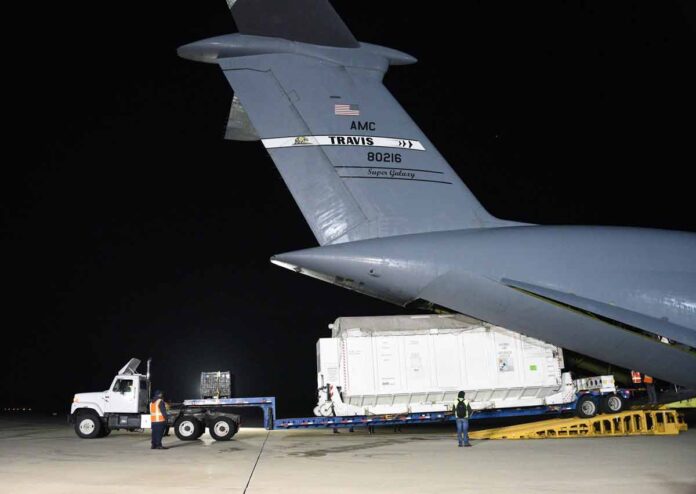The Surface Water and Ocean Topography (SWOT) satellite has arrived at Vandenberg Air Force Base in California, where teams will begin final preparations for the spacecraft’s launch on a SpaceX Falcon 9 rocket from Space Launch Center-4 East in December.
SWOT is the first satellite mission to observe nearly all of the water on Earth’s surface, measuring the height of water in lakes, rivers, reservoirs, and the ocean. SWOT’s instruments will be able to resolve ocean features such as currents and eddies less than 60 miles (100 kilometres) in length, lakes and reservoirs larger than 15 acres (6 hectares), and rivers wider than 330 feet (100 metres) in width.
The scientific payload was built by NASA’s Jet Propulsion Laboratory in Southern California. JPL delivered the payload to France in June 2021, where a multinational team assembled the Ka-band Radar Interferometer (KaRIn) and other finely tuned instruments with the satellite bus.
SWOT arrived at Vandenburg from France on Oct. 16 aboard a US Air Force C-5 Galaxy aircraft and was transferred to the Astrotech Space Operations facility to begin launch preparations. SWOT will go through a number of procedures in the coming weeks in order to launch. Before the satellite can be launched into space, teams must encase it in a protective payload fairing, mate it to the rocket, and transport it to the launch pad.
SWOT will collect data from the ocean once in orbit, assisting researchers in better understanding how seawater absorbs atmospheric heat and carbon, a process that influences global temperatures and climate change. This information will also assist researchers in better understanding coastal sea levels and, eventually, how sea surface height will interact with a changing climate to affect things like storm surges.
SWOT will also provide the first global survey from space of freshwater lakes, rivers, and reservoirs. The satellite will measure the height of the water as well as the surface area, or extent, of these bodies of water. The data will help scientists and water resource managers better monitor how much water flows into and out of Earth’s freshwater bodies by allowing them to track changes in water volume over time.

